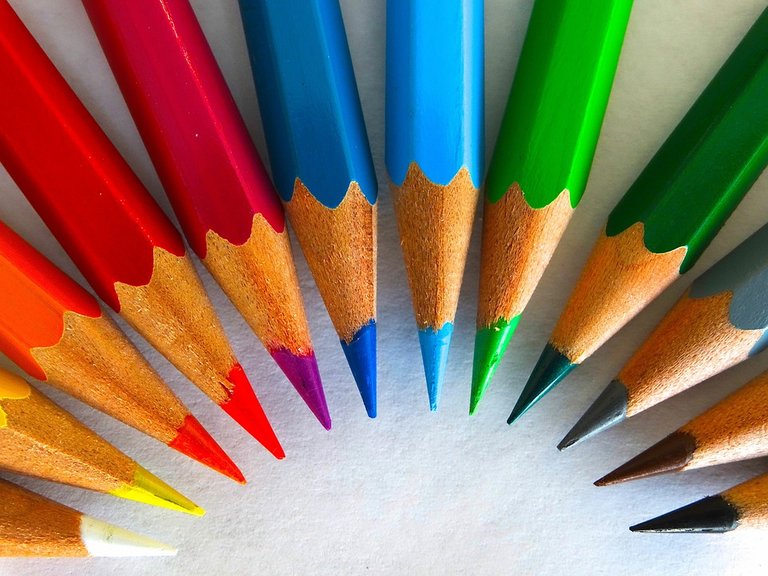Let's present a mythical scene at the beginning of today's writing. Think about the days of your childhood when your mother or father taught you 'AAA' and 'A B C'. What was not that wonderful, those days? As the age increases, the skill of writing in your own hands, but the boyfriend pencil did not leave us during his childhood. This stuff made by our trusted companion wood is still in the drawing of different pictures.
The funny thing is - many of us do not know how to make pencils. It is a bit of a surprise to know the process of forming a fully processed pencil from the wood. We are going to know today that the process is funny.
The most important part of the pencil is its lead with which we work as a writing or drawback. Its English name Lead Although the name Lead actually does not lead to lead in this lead, but rather there is a mix of carbon shaped graphite and clay. Let's first know the process of making this lead.
(1) They were first placed in a large rotary drum with many graphite fragments and clay. Large pieces of stone are already kept in the drum. When the drum is rotating, the graphite and the clay are completely crushed into powders by the crumbling pressure. After this mixture was mixed with water and kept for three days.
(2) Then, with the help of one machine, the water is removed from the mixture. The substance found in this way is kept for four days after it so that it can be hard to dry.
(3) Once the mixture is dry, it is turned into powdered with the help of another machine. Then mixing the water there softened the mixture.
(4) After mixing the mixture into a soft tube, the shape of the chikon rod is inserted into the metal tube. Then the rods were cut in the same size as the pencil machine. The lead was then handed over to the conveyer belt where they were drying.
(5) After drying, the lead is heated to 1,800 degrees Fahrenheit during oven. As a result the lead becomes more smooth and strong.
Let's come to the wooden words used in pencils. The pencil will have to choose wood that can withstand regular casualties. For most pencils, cedar tree wood is used because it has aroma. Also its size is not easily distorted. Now let us know about the processing of this wood.
(1) After cutting the timber of the cedar tree and processing it, the size of the block is given.
(2) Cut the block, and it is divided into several chunks, which are called slat in English. These are 7.25 inches long, 0.25 inches thick and 2.75 inches wide. The size of the company can be different. The slats were then handed over to the conveyer belt.
(3) The slate surface is smooth.
(4) Sleeves are cut into half-circular grooves on the belt. The thickness of the grooves is half of the thickness of the lead.
(5) The slats are then glued and pencil lead is inserted inside the groove.
(6) When the four steps were in progress, another conveyer belt was carrying another batch slot. Their size, type of groove, are all similar to those mentioned slats. There is no glue on these and they do not have any lead in the grooves. At one time these slots were placed on the slots mentioned in the 4th step. Thus a sandwich was made. These sandwiches are kept from the belt and clamped with clamps. Then they were pressurized with the help of hydraulic press so that the excess glue came out around. Sandwiches are still stuck in the clamps to dry. When dry, excess gloves are truncated.
(7) Cutting machine is the responsibility of sandwiches. They are cut in circular or hexagonal with the help of fast rotating steel blades.
(8) Different pencils were cut from each slot to 6-9 with the help of the same machine.
(9) Each pencil is then smoothed and dried with varnish. These works are also done with machines. As long as the desired color is reflected in the pencil, the process continues over and over again.
(10) At the end of the pencil, the metal case is attached with glue or metallic thorns. Then, in these cases, the ereazara made in the pencil becomes a pencil.
The back-end technology of getting a pencil filled with lead wood from the cedar tree to the finish line is really nice. Here is the end of the pencil making strategy. But before finishing it is a fun event to leave.
Haimen Lippmann was an American. At one time he noticed that since pencil and eraser were different, many times he got some trouble. From this disturbance he got a new idea, pencil ereazera is the only if it is! The idea was that he did not stop using his pencil only. Rather, on 30 March 1858, he took a patent for the idea of this idea! As a result, Leipman was the first registered creditor to apply the ereaz behind the pencil.
The event is not over here, but it's going to start now. In 1862, Lipman sold his patent for $ 100,000 to a man named Joseph Reconderephor! Thinking? One hundred thousand dollars of that time! The tragedy part of this incident started in 1875. The Supreme Court of America declares the innovation of Lippmann. Because, according to them, Lippmann did something new, rather than combining the two existing things only! Of course, Lipman's pockets just swollen in those days.
